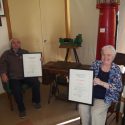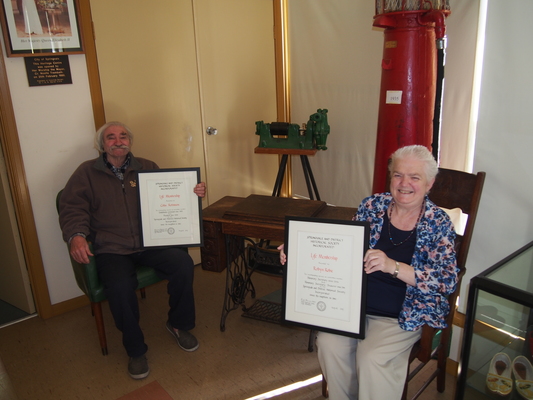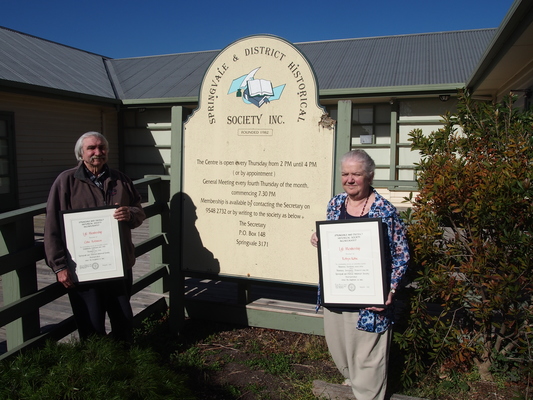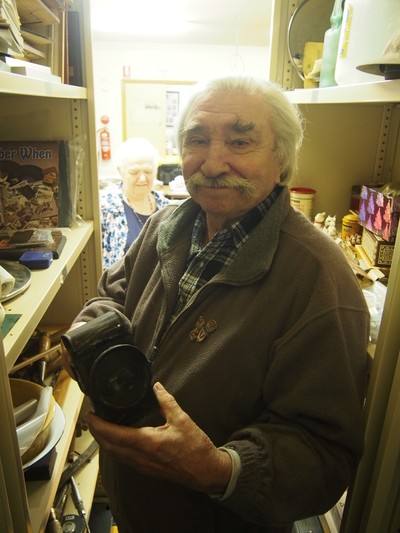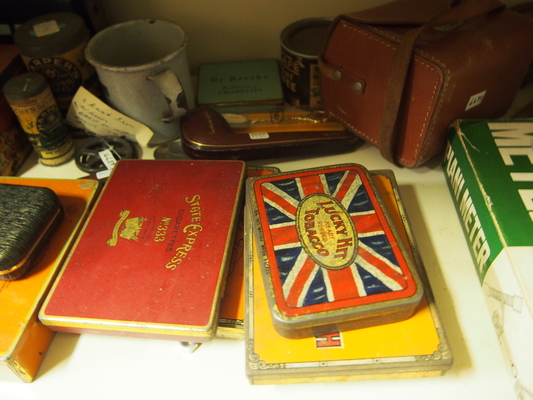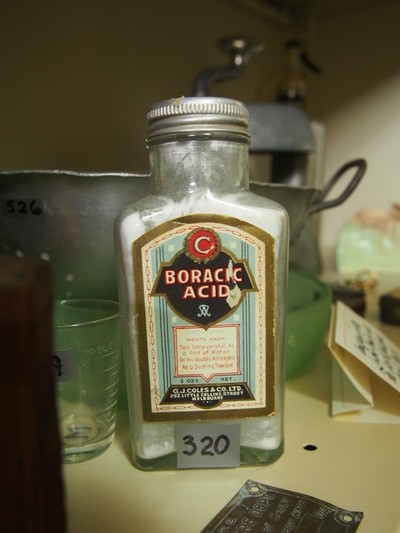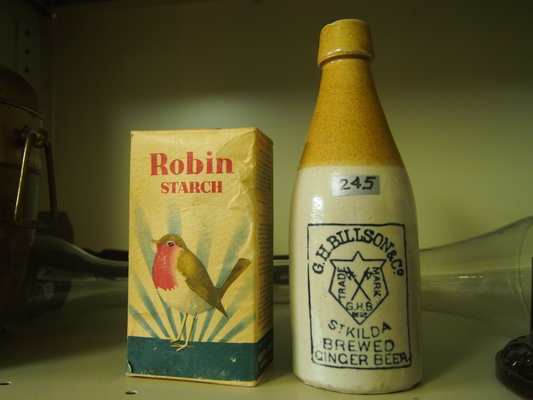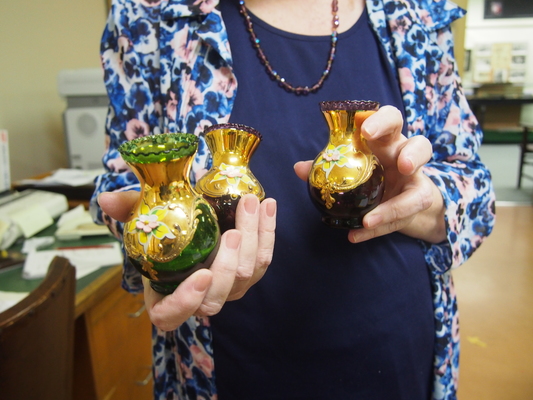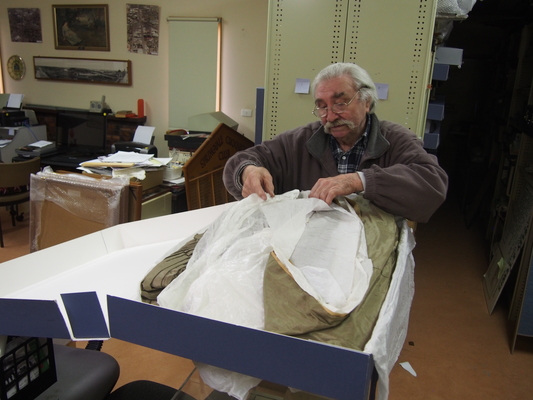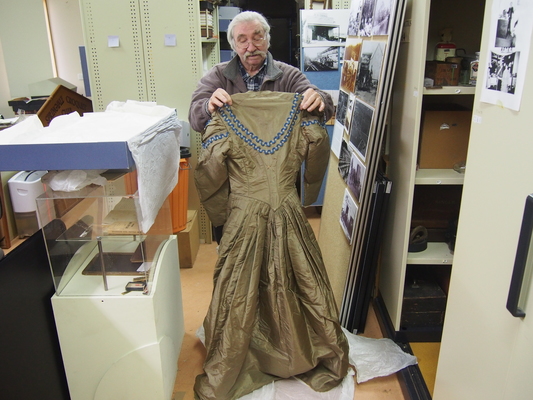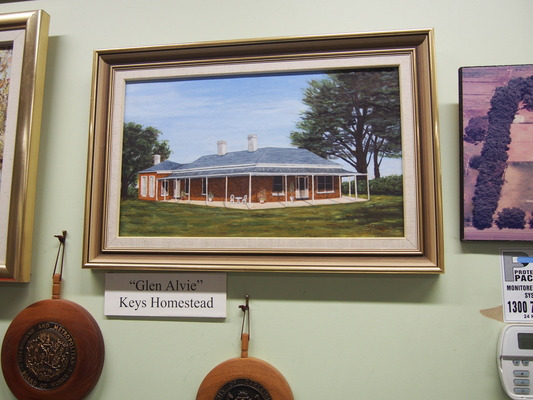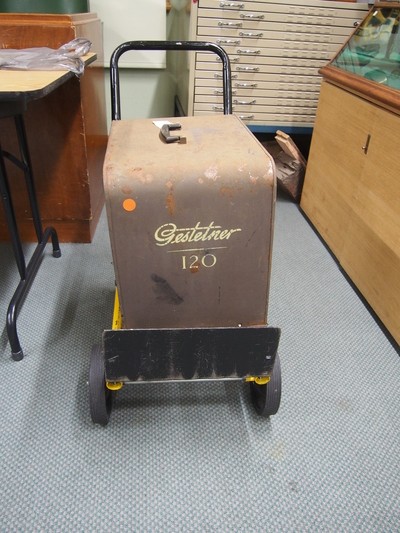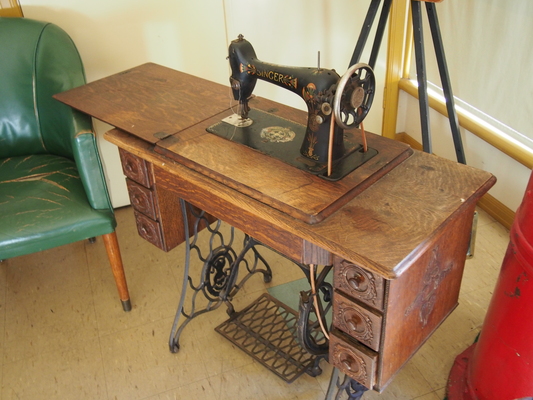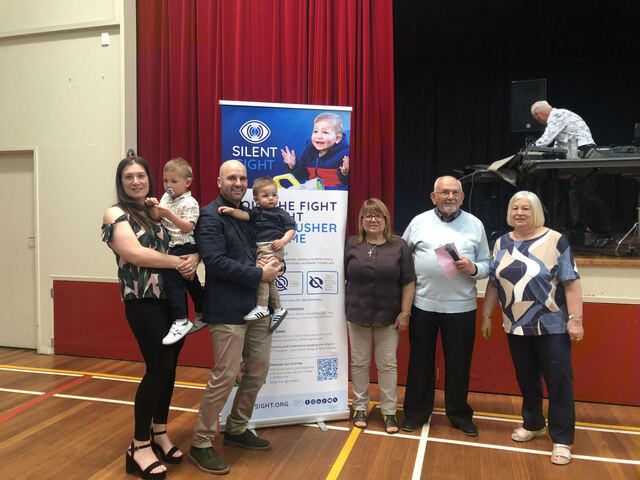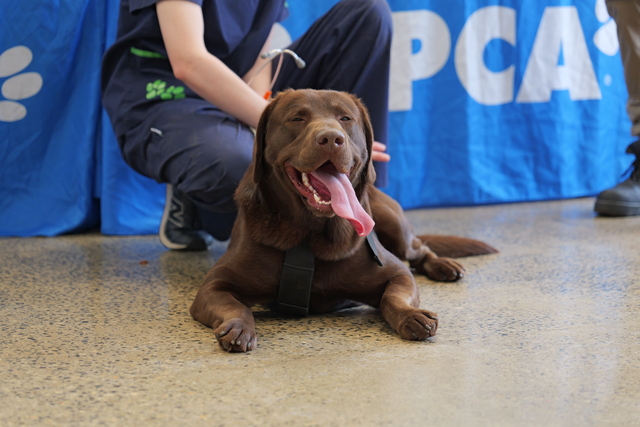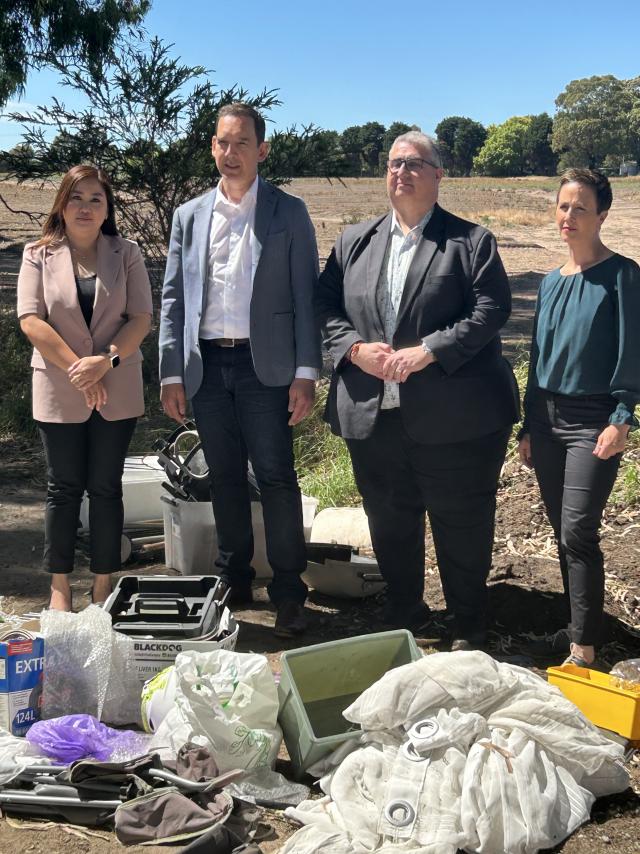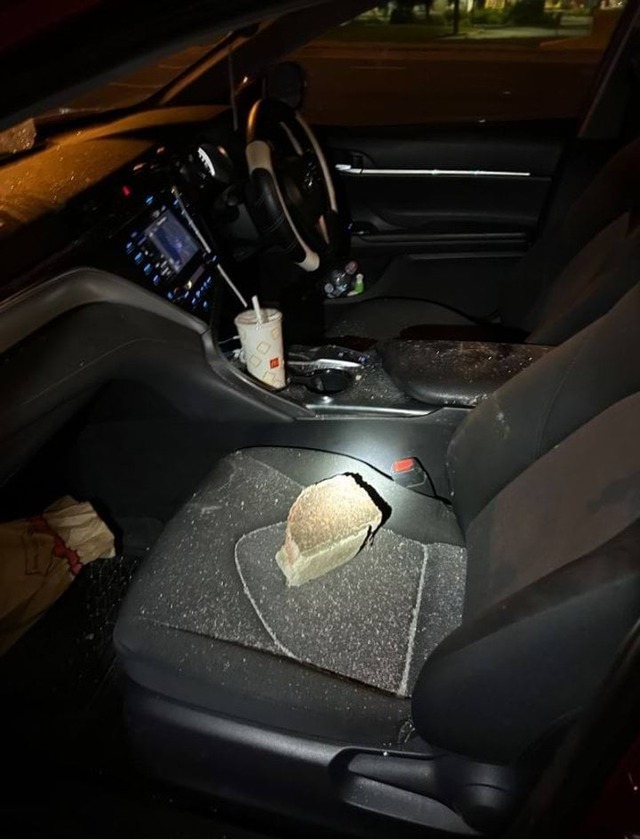By Helen Velissaris
Colin Robinson and Robyn Robie’s eyes light up when they get the opportunity show off some of the old but intriguing artefacts from Springvale’s past.
They have just been inducted as life members of the Springvale Historical Society and still feel like kids in a candy store with the haul of oddities they get to look after.
On a quiet Tuesday afternoon they were curiously looking at one of their new acquisitions – a Gestetner from the 1950s.
“It’s one of the original photocopiers,” Robyn, 61, said.
It is a duplicating machine that had to be attached to a typewriter and special paper inserted, a bit like carbon copy paper.
Turning a handle for each page, the machine would print numerous copies of the one document, speeding up the process for businesses that needed flyers or advertisements.
“That particular one was used in the 1950s by a local church for their newsletter and then by their cricket club,” Colin, 81, said.
“You had to be so careful because you’d get black ink all over you.”
The Springvale Historical Society was gifted it by none other than the man who put out the church newsletter all those years ago.
Giving a new life to the forgotten relics from Springvale’s past is how the society has built up its name.
It has more than 11,000 items ranging from the mid-1800s to the 1980s and constantly gets in new artefacts to add to the hundreds of exhibits.
Recently the society had a display on Australian military uniforms, traditional wedding dresses and hats.
It focused on colonial Australia, Springvale’s multicultural population and tradition and the First Fleet. The exhibitions can be curated by theme, period or area.
Colin was introduced to the society when he was involved in making a display in 1996. He has a huge personal collection of artefacts and has become invaluable to the society. He was named president in 2001.
For Robyn, a small push from her family got her through the door but she stayed for the love of history.
She became the secretary in 1996 and has held the post ever since.
All the items they look after have been donated to the society, showing just how trusted the team is.
As with anything spanning more than a century, there are gaps in the timeline.
They said there was a rush of excitement whenever they receive something they never knew existed or belongs to an unknown part of the Springvale’s history.
“You’re always looking for stuff, and there are gaps in the history,” Colin said.
“You always find little bits and pieces – it’s a treasure trove.”
Exploring their vast cabinets and shelves, it’s hard to know where to start or even look.
There are sporting trophies, an old bottle of ginger beer, a box of starch, a glass bottle of mouth wash, a deflated football, a tobacco kit, a bicycle lamp – the list goes on.
One of Colin’s favourite items is a glass bottle feeder for babies. He said it dates back to the 1920s and that there were different sizes available as the baby grew.
For Robyn, sentimental value makes it hard for her to go past her aunt’s Murano style glass and enamel holders from the 1920s.
As a big reveal, Colin brings forward a box filled with tissue paper. Beneath the layers contains a perfectly intact green hoop dress from the 1880s. It is also joined by a greying pink lace dress from the same era.
Seeing them so close shows how hard it would have been to wear let alone make such items.
That thrill of seeing these artefacts so close up is why the volunteers give their time.
They are passionate about bringing the items to new audiences and to champion the suburb’s cherished history.
The historical society will soon have its own dedicated display suite and office in the Springvale Library that will help it have a bigger presence and more modern facilities.
It is already working on more exhibitions.
Break out box:
Pre-1800s: Local Boon Wurrung people inhabit land.
1840s: Farmers use the land for cattle grazing.
1852: Springvale gets its name from a hotel opened on Dandenong Road (Princes Highway).
1850-1870s: Land starts getting sold and divided up to speculators, graziers, farmers and gardeners and lumberjacks.
1861: Wesleyan Church was first built (followed by Lightwood (Springvale) Wesleyan church 1863, Anglican Christ Church at Dingley in 1873 and Keysborough Wesleyan Church 1877).
1874: School built for Keysborough community (Springvale farmers’ children get school in 1875).
1879: Railway line between Melbourne and Sale was constructed through the area.
1920s: Industrial boom after engineering plant Kelly & Lewis and the Rocla Concrete Construction Works open – flower industry and poultry farming become popular – Braeside horse stud and stables developed, electricity installed.
1930-40s: Great Depression slows industry, unemployment hits area hard. WWII sees many people go off to war.
1945-50: Large population influx fuelled by immigration and returned armed forces personnel.
1955: Split from Dandenong Shire to become the Shire of Springvale and Noble Park.
1980s: Population quadruples in 30 years.
1990s: City of Springvale divided between Greater Dandenong City and Kingston City
Source: Gillian Hibbins, emelbourne.net.au.

